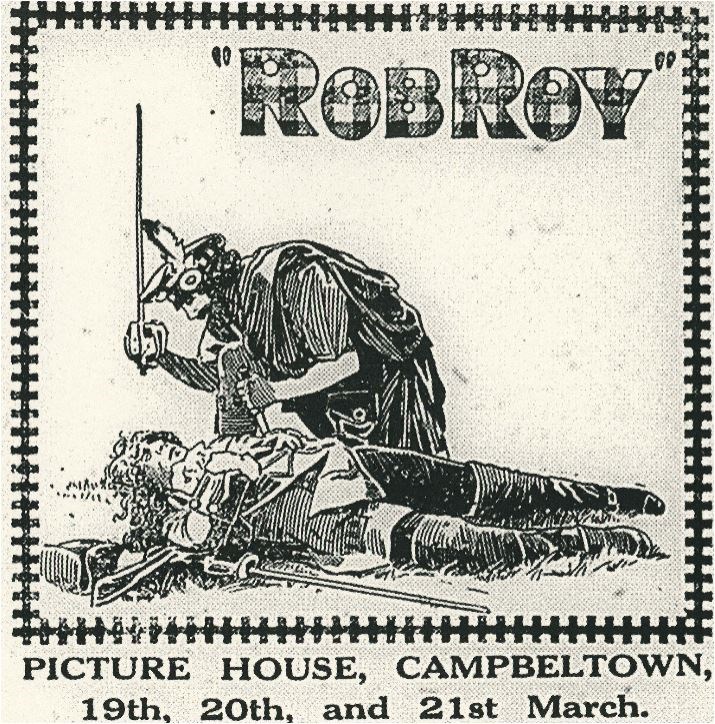
HISTORIC CINEMA ARCHIVE DONATED TO NATIONAL LIBRARY
The historic archive from Campbeltown Picture House – one of the first purpose built cinemas in Britain which opened in 1913 - is being donated to the safe keeping of the National Library of Scotland.
The charity that runs the cinema has carried out an extensive project in cataloguing and digitising its paper records and has agreed that their long term preservation is best secured as part of the National Library's Moving Image Archive.
The Grade-A listed Campbeltown Picture House is to re-open later this year after a £3.5 million restoration project that will confirm its place at the heart of the cultural, entertainment and social life of Campbeltown and Kintyre.
The Glasgow-school building with its art nouveau exterior was designed as a cinema and is the oldest in Scotland that has been continually used for that purpose. Set on the banks of Campbeltown loch, it is of major architectural and historical significance.
The paper archive tells the story of how cinema became established in Scotland, detailing the roles played by some of the early pioneers and the local people who backed them by becoming shareholders in the Picture House venture.
The Campbeltown Picture House may never have existed had it not been for its first managing director, Frederick Rendell Burnette. Born in Dorset, he started life as a performer being variously described as a wizard, mind-reader and conjurer. Spotting an opportunity with the advent of moving pictures, he visited the United States to discover more and, on returning to Scotland, set up a chain of cinemas including the Campbeltown Picture House. Not content with only showing films, he commissioned them as well and in 1914 local people were treated to a showing of a film featuring the 6th, 7th, and 9th battalions of Argyll and Sutherland Highlanders marching through the town from the Old Quay.
Other items in the archive include:
- Newspaper cuttings announcing the opening of the new cinema on Monday May 26, 1913 “as a first class picture house.” One cutting continued: “This house has been specially designed for comfort and safety and will compare favourably with any first class, up-to-date London or Glasgow picture house. Nothing but the best pictures selected for this theatre.”
- Detailed architectural drawings for the construction of the Picture House
- Early advertisements for cinema showings
- A receipt for the sale of the cinema piano in 1933 as the silent films it used to accompany gave way to “the talkies”
- Ledgers detailing the contributions of the original 40 shareholders
- Financial information including the wages paid to the various members of staff
- Details of a plane crash in 1938 which was carrying film reels to the Picture House. The plane came down in gale force winds near Largs but, fortunately, the two crew survived. The Picture House had to be closed that night as the reels containing the main picture, an American gangster movie “Bullets or Ballots” starring Humphrey Bogart and Edward G Robinson, were stuck on the wrecked plane on an Ayrshire hillside.
“Campbeltown Picture House occupies a very special place in the history of cinema in Scotland which makes its archive all the more important,” said Ruth Washbrook the National Library’s Moving Image and Sound Collections Manager. “The Campbeltown archive will enrich our collections and add to the knowledge we hold about cinema in Scotland. We are delighted it is coming to us.”
Jane Mayo, who chairs Campbeltown Community Business Ltd., the charity which runs the cinema and has carried out the restoration, said: “We are delighted our precious archive will become part of the national collection so that future generations can be inspired by the details of the story of an isolated community determined to bring the latest technologies to their town.”
Contact Information
Notes to editors
The National Library of Scotland
The National Library of Scotland is a major European research library and one of the world’s leading centres for the study of Scotland and the Scots - an information treasure trove for Scotland’s knowledge, history and culture. The Library’s collections are of world-class importance. Key areas include digital material, rare books, manuscripts, maps, music, moving images, official publications, business information, science and technology, and modern and foreign collections. The Library holds more than 26 million physical items dating back over 1000 years in addition to a growing library of e-books, e-journals and other digital material. The collection includes over four million books, eight million manuscripts, two million maps and over 45,000 films and videos. Every week the Library collects around 3,000 new items. Most of these are received free of charge in terms of Legal Deposit legislation. www.nls.uk / @natlibscot /facebook
